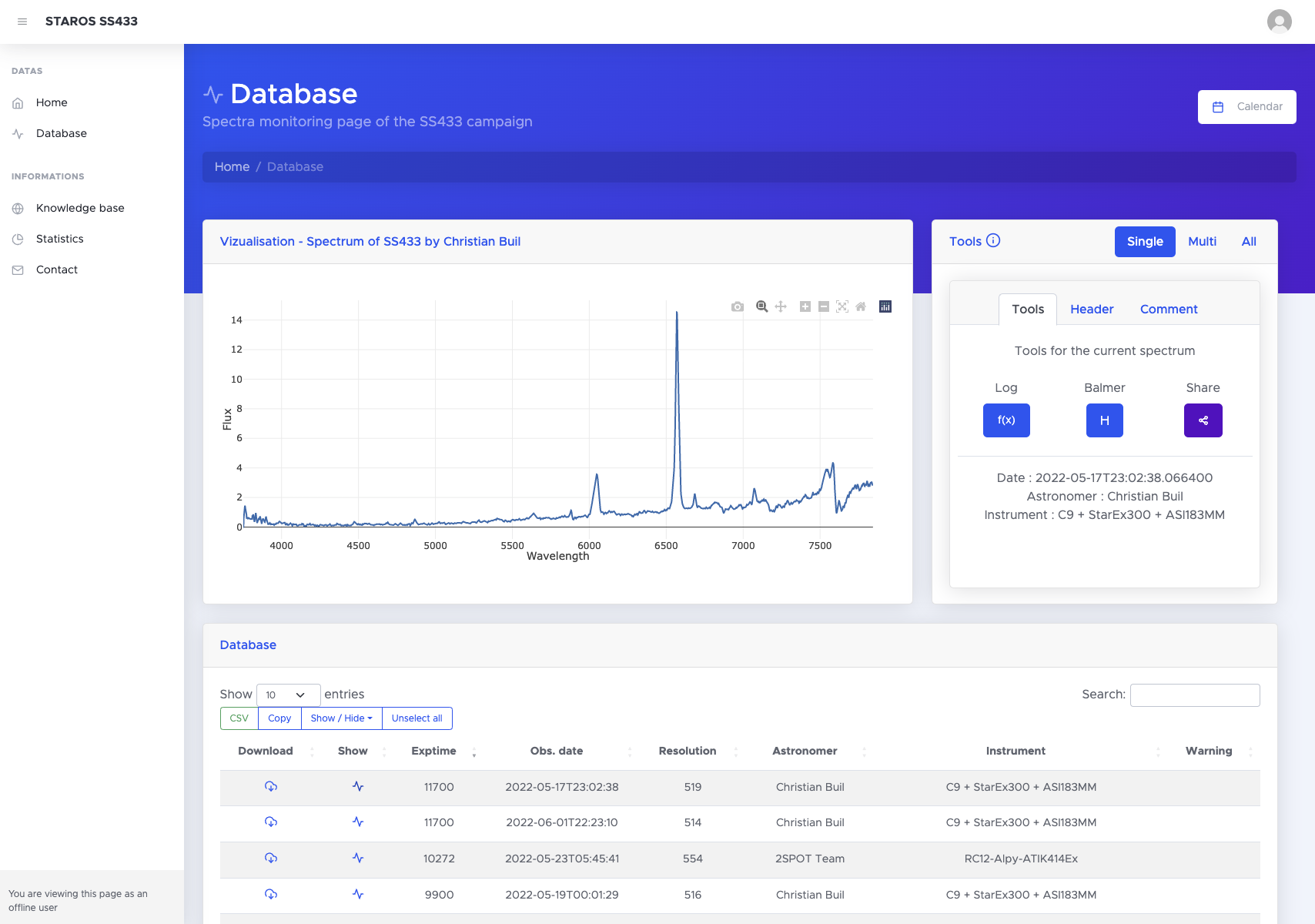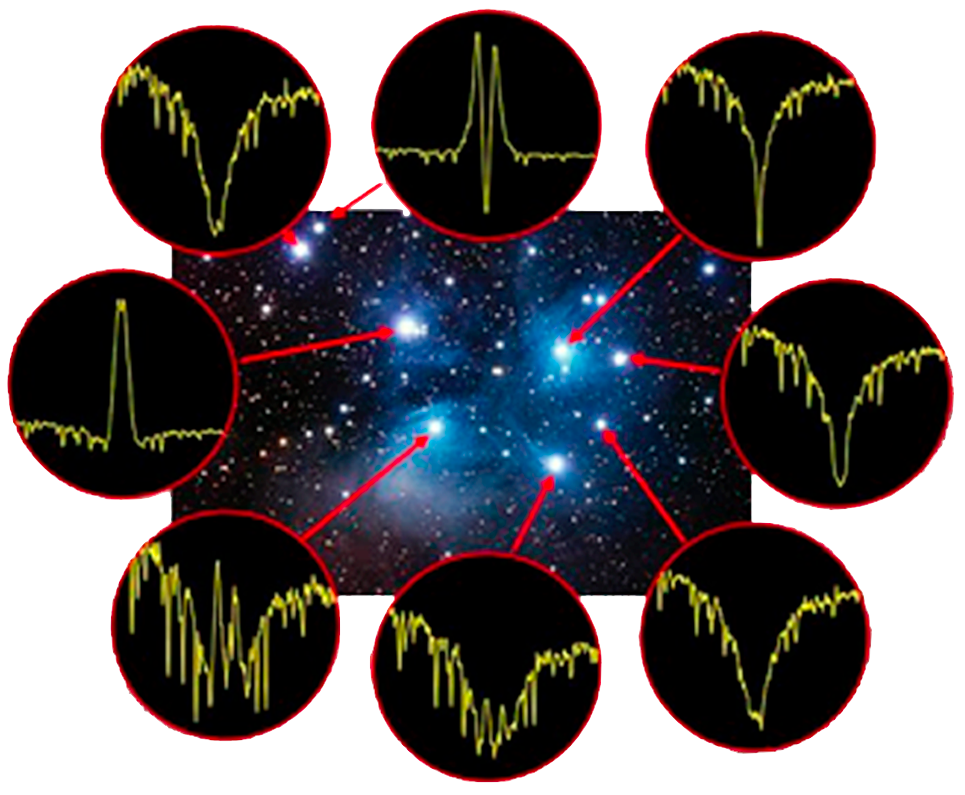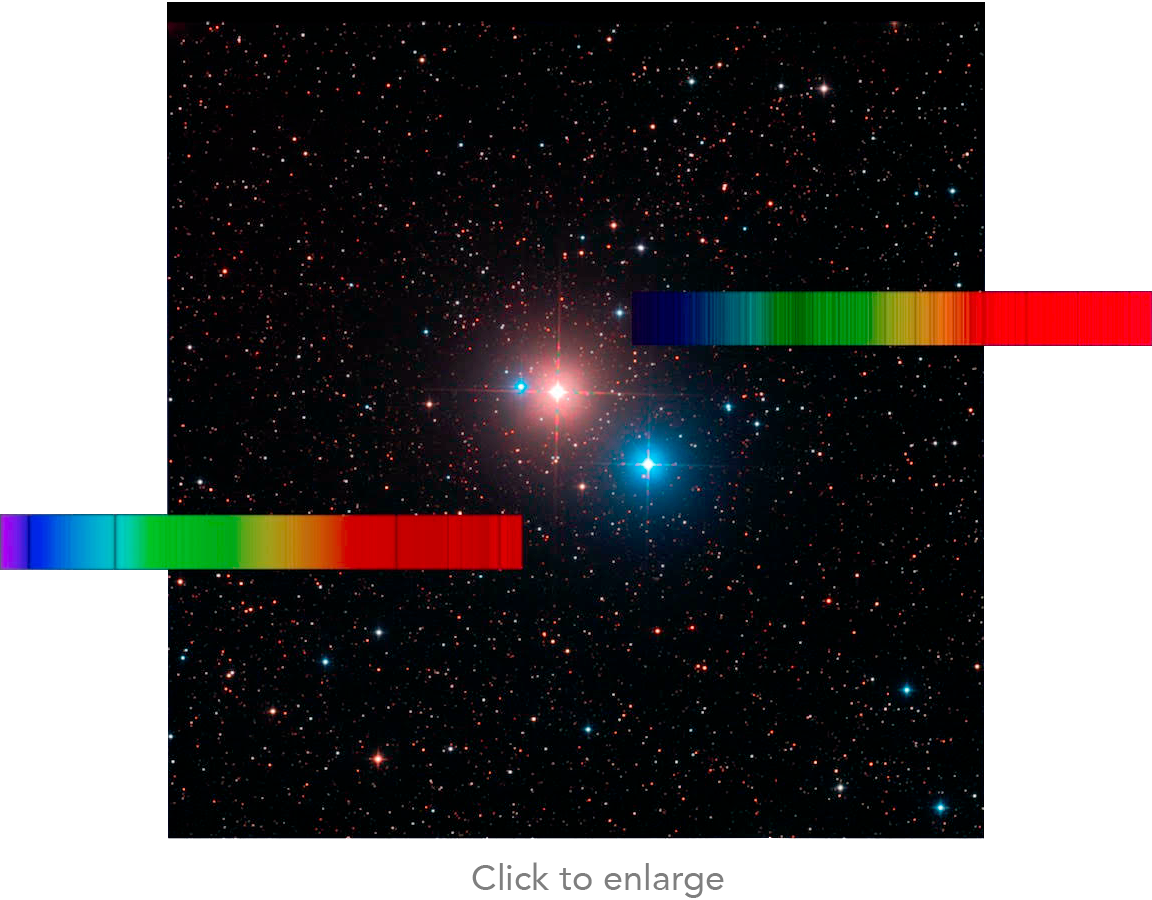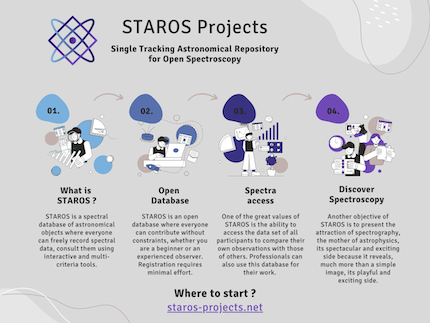How campaigns work ?
The aim of the observing campaigns is to collect amateur spectra spectra of specific astronomical objects, over a period ranging from a few weeks to a few months. Objects are selected either for their spectacular characteristics, for their educational contribution, scientific interest or any other reason.
Spectral Database
STAROS is a spectral database of astronomical objects where everyone can freely archive spectral data, consult them using interactive and multi-criteria tools, or recover data in their original format for subsequent analysis. STAROS prevents the loss of hard-earned data, by storing them safely and making them easily searchable. Data will no longer hibernate within a drawer !

The core of the STAROS initiative is to collect amateur spectra on precise astronomical objects, within some time span, from a few weeks to a few months.
The objects in STAROS are to be selected either for their spectacular features, their pedagogical contribution, scientific interest, or everything altogether.
And what else ?
STAROS is a public database where everyone can contribute spectra free of constraints, as a beginner or a seasoned observer. Archiving data requires minimal effort.
STAROS is a public database where everyone can contribute spectra free of constraints, as a beginner or a seasoned observer. Archiving data requires minimal effort.
One of the greatest values of STAROS is the ability to retrieve and compare everybody’s data. This enables the observers to gather advice on perfecting data retrieval and analysis, advancing on one’s work, or dynamically following the evolution of astronomical phenomena. In spectrography, everything changes very quickly in the sky !
The STAROS initiative aims to encourage constructive exchange within lists of interests, forums, and other media. It is built over participatory astronomy, where everyone helps each one.
STAROS also aims to introduce spectrography, the mother of astrophysics, and its spectacular and exciting nature, to reveal in the astronomical objects much more than their images, but also their playful and exciting features, the surprises that punctuate spectroscopic observations, and the challenges to be met on still virgin lands.
Spectrography deals with discoveries, sometimes scientific, but above all personal, for one's own culture.
Beyond the simple archiving function, STAROS promotes spectrography among amateurs, to make it known in all its features and to understand it, whatever your expertise. This initiative is also of interest to professionals, who can draw from it, with immediate visibility, data for their own studies, therefore allowing cooperative research and science. In exchange, professionals can shed light on the phenomena observed by amateurs.
What STAROS isn't
- The STAROS initiative cannot be seen as a standard spectral database, given the enormity of what it covers. Nor is it a specialized database on a particular category of objects or dedicated to instruments, because that already exists. There is no need to spread yourself and your data thin by duplicating ProAm spectral databases such as BeSS or Symbiotics (ARAS), which work very well, showing their effectiveness and usefulness.
Observation projects, why?
Astronomical spectrography touches an ever-growing community of amateur astronomers. However, the number of active amateurs is still relatively small.
There is so much to see in the sky when we don't have enough eyes! The idea of STAROS is to direct our gaze toward a limited number of interesting astronomical objects, chosen for their spectacular, educational, or scientific meaning, proposed by the participants, which can also attract professionals.
STAROS answers a common question: where to begin when starting out in spectrography ?
Ultimately, the STAROS is subdivided into sections (or projets) corresponding to each object, offering a coherent series of spectra over a time span. Some examples of observational projects could be:
- Unusual objects such as the microquasar SS433
- A spectroscopic binary star
- The coordinated observation of a newcomer comet;
- Temporary monitoring of eruptive and sudden phenomena such as a nova, which requires attention to astronomical alerts;
- Taking up challenges, such as deep spectrography, by uniting everybody’s resources directed to a particular target, therefore building a gigantic virtual telescope;
- Testing new methods and procedures, etc.
The possible subjects are abundant ! The overall goal is not forcibly scientific but also one of personal and collective enjoyment, to learn - even by making mistakes - and share knowledge.




